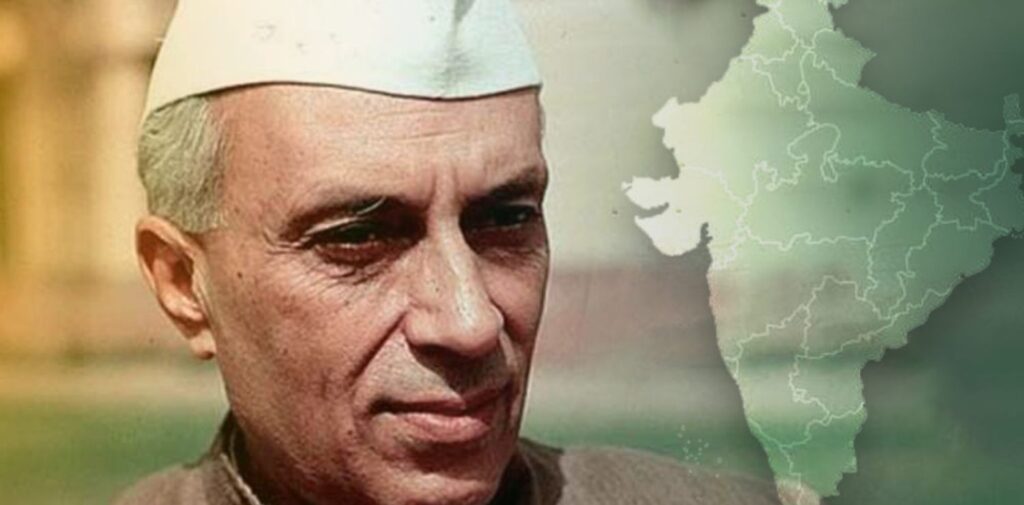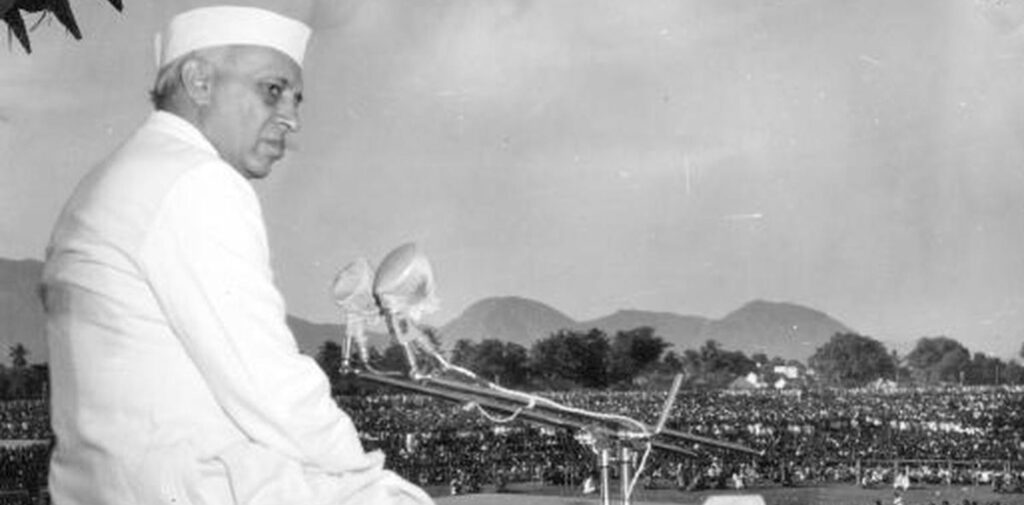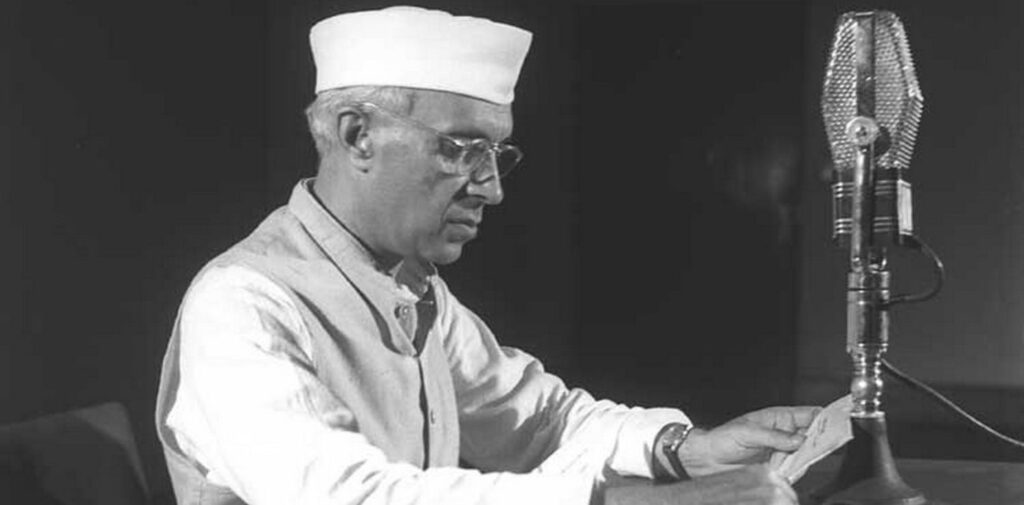The economic policies of Jawaharlal Nehru, the first Prime Minister of India, played a crucial role in shaping the country’s development after independence in 1947. Nehru’s vision for India was to build a strong, self-reliant nation with a modern economy. His economic strategies were aimed at fostering industrialization, improving agriculture, and promoting social welfare. These policies had a profound impact on India’s economic structure and social fabric, which continue to influence the country even today.
Nehru’s Vision for India
At the time when India gained independence, the country faced immense challenges. It was a land of poverty, illiteracy, and underdeveloped infrastructure. The colonial British rule had drained the country’s wealth and left it with limited industrial base. Jawaharlal Nehru, who took charge of the country’s political leadership, had a vision of transforming India into a prosperous, self-sustained, and industrialized nation. He was deeply influenced by socialist ideas, and thus, his policies aimed at reducing inequalities and promoting collective welfare.
Nehru believed that economic development could only be achieved through state intervention, public ownership, and centralized planning. His policies focused on the public sector, large-scale industrialization, and planned economic growth. He wanted to develop an economy that would not rely on foreign powers or exploitation of resources, but rather be independent and self-sustaining.

Key Features of Nehru’s Economic Policies
- Five-Year Plans: One of the major aspects of Nehru’s economic policies was the introduction of the Five-Year Plans. These plans were inspired by the Soviet model of economic planning and were aimed at accelerating economic growth in a systematic and organized way. The first Five-Year Plan was launched in 1951, and its primary focus was on improving agriculture, irrigation, and basic infrastructure.
- Industrialization: Nehru’s government prioritized the growth of the public sector, particularly heavy industries. The belief was that developing key sectors like steel, coal, electricity, and transportation would lay the foundation for future growth. Major industries like steel plants were set up in Bhilai, Bokaro, and Durgapur. The government also built large dams for irrigation, such as the Bhakra Nangal Dam, to ensure a steady water supply for agriculture.
- Public Sector Enterprises: Nehru strongly advocated for public sector involvement in industries, believing that it was the best way to ensure equitable development and prevent exploitation by private monopolies. As a result, the government set up a number of public sector enterprises (PSUs) to manage industries in key areas. These included companies like Indian Oil Corporation, Steel Authority of India, and Bharat Heavy Electricals Limited (BHEL). Nehru’s belief was that public ownership would ensure fair distribution of wealth and help the country achieve self-reliance.
- Agricultural Reforms: In Nehru’s vision, agricultural growth was essential for India’s overall development. While industrialization was a priority, he understood that agriculture was the backbone of the Indian economy. The government made efforts to improve agricultural productivity by introducing new techniques, irrigation facilities, and research in farming. The establishment of institutions like the Indian Council of Agricultural Research (ICAR) was part of this effort. However, despite these measures, the overall growth in agriculture was slow during Nehru’s time.
- Social Welfare and Education: Nehru’s policies also emphasized improving the social welfare system. His government introduced several programs to address issues such as poverty, unemployment, and social inequality. Efforts were made to improve education, healthcare, and public services. Nehru believed that education was key to the country’s progress, and he was instrumental in setting up institutes like the Indian Institutes of Technology (IITs) and the Indian Institutes of Management (IIMs) to produce skilled professionals for the future.
- Foreign Trade and Economic Independence: Another major policy of Nehru’s government was economic self-sufficiency. He wanted India to be free from foreign economic dependence. This was done by promoting import substitution industrialization, which focused on developing domestic industries to replace foreign goods. However, this policy also led to the imposition of import restrictions and controls on foreign trade, which limited competition and led to inefficiency in some sectors.

Positive Impacts of Nehru’s Economic Policies
- Industrial Growth: Nehru’s industrialization policies led to the establishment of key industries that continue to serve as the backbone of India’s economy today. The public sector enterprises set up during his time provided the infrastructure for industrial growth in the subsequent decades. India developed a substantial industrial base, which played a role in increasing employment opportunities and improving productivity.
- Development of Infrastructure: One of the significant achievements of Nehru’s economic policies was the development of infrastructure. The country saw the building of roads, railways, dams, and power plants, all of which contributed to the growth of various sectors. The construction of large irrigation systems helped in boosting agricultural output, especially in areas that were dependent on monsoons.
- Social Transformation: Nehru’s policies also led to social transformation. The focus on education and healthcare helped improve literacy rates and public health. Over time, this laid the foundation for a more educated and healthier population, which has been crucial for India’s later economic success.
- A Strong Public Sector: The growth of the public sector was seen as a key strength in Nehru’s vision. Public sector companies contributed significantly to India’s industrial output, and many of these companies have since grown to become leading players in their respective industries. The public sector also played a crucial role in creating jobs and reducing unemployment.
Negative Aspects of Nehru’s Economic Policies
- Overemphasis on the Public Sector: While Nehru’s focus on public sector enterprises was well-intentioned, it led to inefficiencies in some cases. Many state-owned companies were slow to innovate, and bureaucratic controls hampered their growth. In some cases, the public sector became overstaffed, which further contributed to inefficiency.
- Limited Agricultural Growth: Despite the government’s efforts to modernize agriculture, the country struggled with low agricultural productivity during Nehru’s tenure. The Green Revolution, which later succeeded in transforming Indian agriculture, was not implemented during Nehru’s time. This delay in agricultural progress led to food shortages and a reliance on imports for basic food items.
- License Raj and Bureaucratic Controls: Nehru’s policies included heavy government control over industries and trade, leading to what became known as the “License Raj.” Under this system, businesses needed government permits to produce goods, expand, or even import materials. This system stifled entrepreneurship and innovation, leading to inefficiencies and a lack of competition.
- Slow Economic Growth: While Nehru’s policies were focused on long-term development, they did not immediately yield high economic growth. The country’s growth rate remained relatively low during his tenure, and India continued to face poverty and unemployment. This was partly because the focus on large-scale industries often ignored smaller, more efficient enterprises that could have contributed to faster growth.

Legacy of Nehruvian Economic Policies
Nehru’s economic policies left a mixed legacy. On one hand, they laid the foundation for India’s industrial growth, development of infrastructure, and social welfare programs. His emphasis on self-reliance and public sector growth was significant in making India an independent economy, although it came with challenges like inefficiencies and a slow growth rate. On the other hand, the heavy bureaucratic controls and the slow pace of agricultural reform were obstacles that India faced for several years after his death in 1964.
In the decades following Nehru’s rule, India moved towards more market-oriented reforms, especially in the 1990s. However, the institutions and industries created during Nehru’s time remain crucial parts of India’s economy today.
Conclusion – Nehruvian Economic Policies
The Nehruvian economic policies had a profound impact on India’s development journey. Though the results were not immediate, they laid a strong foundation for the future. The policies of industrialization, infrastructure development, and social welfare have helped India become one of the world’s largest economies. While some aspects of Nehru’s vision were less successful, his focus on self-reliance and long-term planning provided a roadmap that helped India navigate the challenges of the post-colonial era. Nehru’s policies, although flawed in some areas, were driven by a genuine desire to improve the lives of Indians and create a strong, independent nation.




